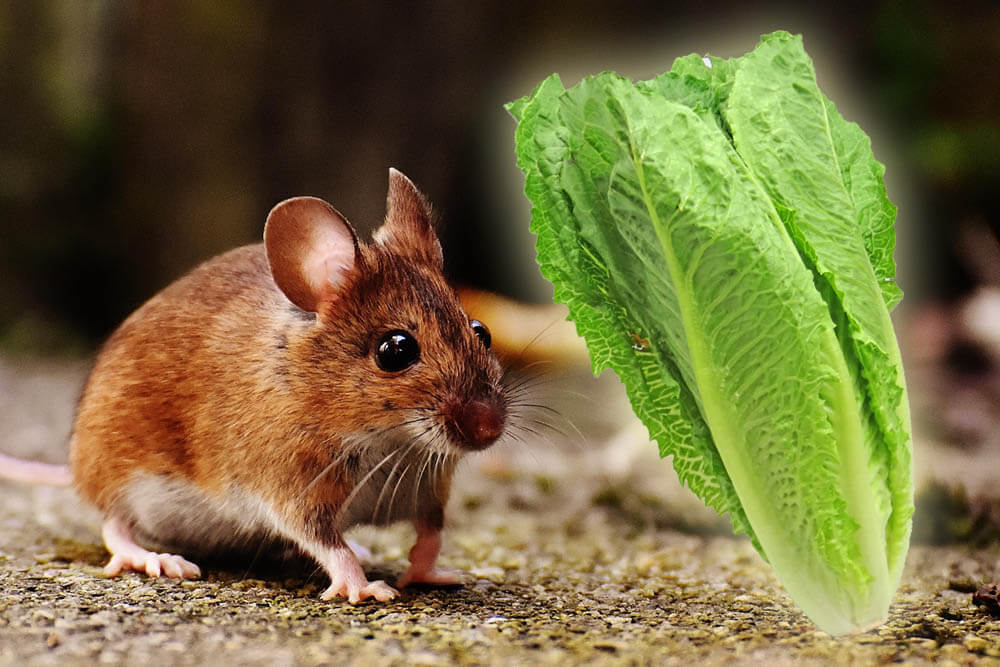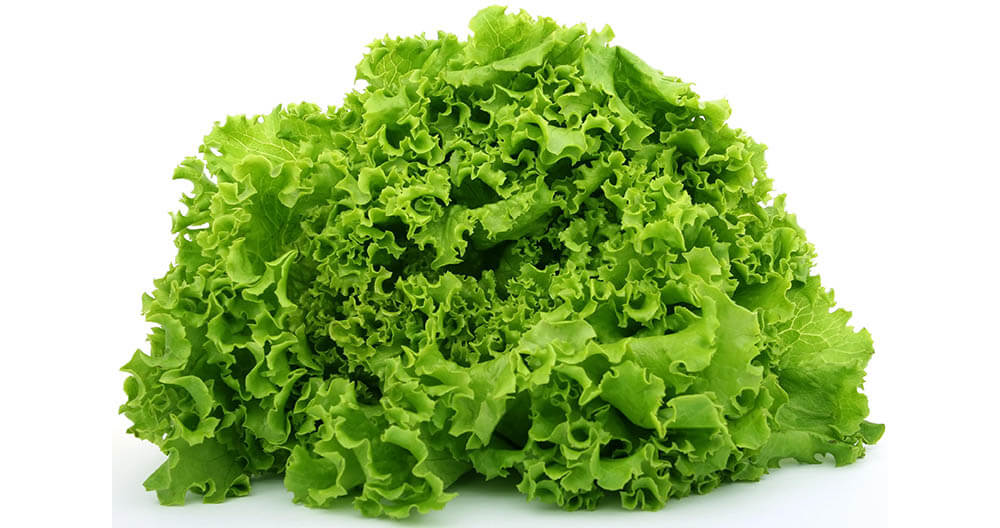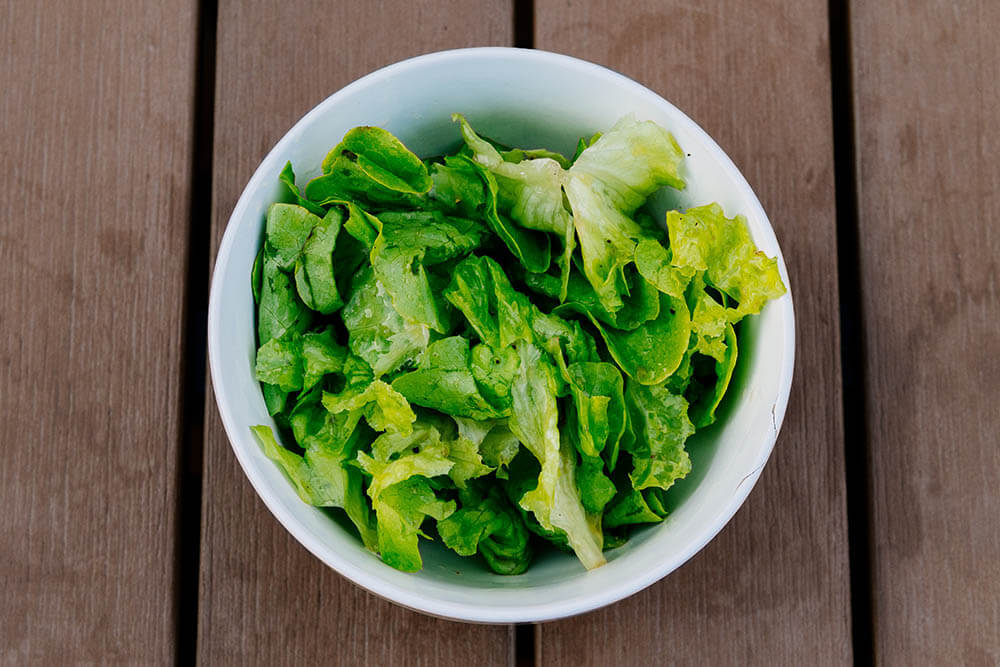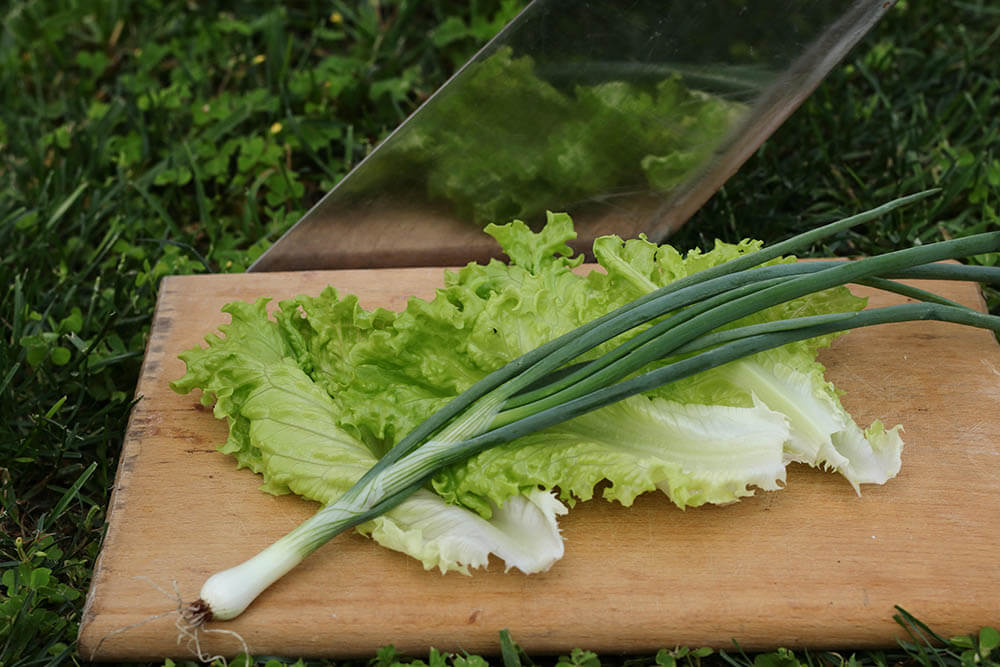Because vegetables are good for us, we tend to think of them as appropriate food for our pets. Unfortunately, what’s good for humans isn’t always good for animals.
Take lettuce, for example. While this veggie is an excellent, health-boosting snack for people, it isn’t always good for mice.
However, this doesn’t mean your pet mouse can never eat lettuce. As long as it eats this vegetable in moderation, it can still enjoy its crunchy goodness and benefit from its nutritional content.
With that in mind, let’s dive into whether or not mice can eat lettuce!

Why Should Mice Eat Lettuce in Moderation?
There are three main reasons why too much lettuce is bad for mice.
Lactucarium
Lettuce contains a chemical known as lactucarium, which can cause digestive problems in some small mammals. For this reason, feeding your pet mouse lettuce often or in excess can lead to indigestion and diarrhea.
As some types of lettuce have more lactucarium than others, the type you give to your mouse can also determine whether or not it gets sick.
In general, avoid having your pet rodent consume light-colored lettuce (e.g. iceberg lettuce), as this contains an enormous amount of lactucarium while also having little nutritional value for mice.
Water
Lettuce is 95% water – and watery foods can also contribute to digestive issues such as diarrhea and stomach upsets.
Light-colored lettuce varieties such as iceberg lettuce are generally rich in water, so avoid giving these to your pet.
Calcium
An overabundance of calcium can become a problem for your mouse.
Too much calcium can thicken a mouse’s urine, which can lead to urinary tract infections. It can even cause the formation of bladder stones; if these stones aren’t removed, they can cause a potentially lethal bladder rupture.

Why Is the Occasional Lettuce Good for Mice?
If eaten in moderation, lettuce is good for mice, as this delicious vegetable contains nutrients essential to their survival, such as:
Vitamin A
Vitamin A is great for your mouse’s eyesight.
It also maintains proper cell and immune system function. In addition, it supports healthy growth, making it especially useful to young mice.
Vitamin C
Vitamin C helps keep a mouse’s immune system and skin in excellent health.
A study also demonstrated that vitamin C can increase a mouse’s average life span by around 8.6% and maybe even a whopping 20.4%.
Another study showed that low vitamin C levels can increase the risk of leukemia in mice.
Vitamin B9 (folate)
Folic acid, or vitamin B9, is involved in many processes, including the use of amino acids to build new proteins, the formation of blood cells, DNA synthesis, rapid cell growth, the maintenance of healthy immune function, and more.
Potassium
Potassium is a mineral that helps keep a mouse’s heart and blood pressure healthy.
It has also been observed to support muscle and bone strength as the body grows older, prevent dehydration by regulating fluid balance, and make many bodily functions possible by allowing the brain to convey information throughout the body.
Magnesium
An essential mineral, magnesium maintains a steady heartbeat, keeps the bones healthy and strong, supports the immune system to ward off various illnesses and diseases, and helps maintain proper muscle and nerve function.
Calcium
Another useful mineral, calcium helps develop and maintain strong bones and teeth. It also keeps a mouse’s fur thick and shiny.
On top of all that, calcium plays a role in effective blood clotting as well as the regulation of muscle contractions, which is crucial to essential bodily functions such as the beating of the heart.
Remember: calcium, in moderation, is good for mice. Too much calcium, however, can harm them.
Phosphorus
Phosphorus is a mineral that works together with calcium to keep a mouse’s bones and teeth healthy and strong.
It’s also vital to protein and amino acid synthesis, cell growth, and energy use and storage.
Antioxidants
Lettuce boasts high levels of antioxidants, which protect your mouse from cellular damage caused by oxidative stress. This way, antioxidants can enhance the immune system response and reduce the risk of serious chronic conditions such as diabetes and several cancers.
These compounds also contribute to healthy aging.
Fiber
Dietary fiber is a requirement of a healthy digestive system. It comes in two forms: soluble and insoluble.
Soluble fiber is involved in the control of the body’s blood sugar level, which aids in reducing the risk of diabetes. When it dissolves in gastrointestinal fluids and water, it also creates a gel that’s known to improve digestion. It may even reduce cholesterol.
As for insoluble fiber, it keeps the digestive system functioning properly and reduces the risk of constipation, diarrhea, and other stomach issues. It also feeds the good bacteria in the mouse’s gut, which further improves digestive health.
In addition, fiber makes your mouse feel fuller, discouraging it from overeating. This is good for an overweight mouse on a weight loss regimen.
Water
Lettuce is composed almost entirely of water, which means it’s extremely effective at hydrating the body. If your mouse is losing water due to physical activity or soaring summer temperatures, give it a few lettuce slices!
Keep in mind that ingesting too much watery lettuce can be more bad than good for mice.
Low fat
Lettuce has next to no fat, making it a good choice for an occasional snack, especially if your mouse needs to lose weight or maintain an already healthy weight.

What Types of Lettuce Are Safest for Mice to Eat?
As mentioned previously, there are different lettuce types, and some of them contain more lactucarium and water than others. For this reason, if you’re going to feed your mouse lettuce, make sure it’s the kind with a small amount of such substances.
Examples of lettuce varieties with less lactucarium and water include:
- Green leaf lettuce
- Lamb’s lettuce
- Red leaf lettuce
- Romaine lettuce
Feed these to your mouse as their lactucarium and water content are small enough not to make it ill.
In general, the best lettuce types for mice are those that are darker in color, and whose leaves contain more fiber and less water. Such lettuce varieties usually (but not always) feature shades of purple and red. They also have a stronger taste than light-colored ones.
How Should You Feed Mice Lettuce?
When feeding your mouse lettuce, make sure to keep the following things in mind to ensure it stays in good health:
- It’s best to feed mice fresh, raw veggies, as cooking can remove some of the nutrients from the food and even expose these animals to ingredients that can hurt them.
- Thoroughly wash any lettuce you plan on feeding to a mouse. This will remove harmful substances, such as chemicals, from the vegetable, thereby keeping your pet safe from health concerns.
- Before giving your pet lettuce, consider cutting it up into smaller pieces. Large pieces may serve as a choking hazard if swallowed whole.
- Remember to feed your mouse lettuce as an occasional treat only. This means lettuce shouldn’t be a regular part of your pet’s diet, but rather a snack it can have a few times per week, with each feeding session consisting of only a tiny bit of lettuce. If you’re wondering what lettuce serving size and frequency is most appropriate for your furry friend, ask a veterinarian for advice.
FAQs About Lettuce for Mice
It’s time to answer frequently asked questions about lettuce for mice!
Can mice eat fresh lettuce?
Yes. Lettuce is best served fresh, raw, and completely plain to mice, as these contain the nutrients beneficial to them. Cooking lettuce can reduce its nutritional value, while ingredients such as sugar, salt, etc. can make mice sick.
Can mice eat cooked lettuce?
Yes, though make sure not to use any ingredients such as salt, sugar, spices, herbs, dairy, fat, or oil, as these can harm your pet.
Also, keep in mind that some cooking methods can drastically reduce the nutritional value of lettuce, so you’re better off giving your rodent fresh, raw lettuce.
Can mice eat iceberg lettuce?
It’s a bad idea to feed mice iceberg lettuce. This lettuce type is high in lactucarium and water, which can increase the risk of your pet experiencing digestive issues such as diarrhea and indigestion.
What other vegetables can mice eat?
Mice can eat and benefit from various veggies, though your pet will likely end up preferring some more than others.
Vegetables you can feed your mouse include:
- Arugula
- Beans
- Bok choy (and other Asian greens)
- Broccoli
- Brussels sprouts
- Cabbage
- Carrots
- Celery
- Corn
- Cucumbers
- Curly kale
- Endives
- Parsley
- Peas
- Snow peas
Before feeding your mouse any of these vegetables, make sure to wash them thoroughly. You can also chop them up into smaller pieces to make eating them easier for your pet. Also, make sure these veggies are fresh.
Don’t feed mice raw beans, rhubarbs, garlic, or onions, as these are bad for them.

Conclusion
Yes, mice can eat lettuce. However, make sure to feed your pet lettuce types that are low in lactucarium and water, as an excess of these substances can give it digestive problems such as diarrhea and stomach upsets. Also, feed your mouse this vegetable as an occasional treat only to further reduce the risk not just of digestive concerns but also health conditions associated with consuming too much calcium.
At the end of the day, lettuce isn’t the worst thing you can give a pet mouse. It isn’t toxic to mice, and the worst it can do is give our rodent friends diarrhea. Most importantly, it contains nutrients that can boost their health. So keep your pet healthy and happy – feed it the right types of lettuce in moderation!
